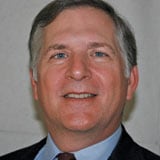For all the turmoil and “risk-on, risk-off” trading going on in the markets, things look pretty good through the end of the year...and then it may be time to worry, writes Stephen McKee of No-Load Mutual Fund Selections & Timing Newsletter.
With the Federal Reserve’s announcement that they plan to keep short-term interest rates near zero at least through late 2014 and extend “Operation Twist” to also try to keep longer-dated yields down, we have to ask two questions.
One, are things still really that bad in the economy generally—and banks specifically—that they “know” they will keep rates low for nearly three more years? We know low interest rates benefit borrowers because it simply costs less to support the loan.
The US Treasury sure appreciates it. In the secondary market, some are even willing to buy US debt at prices that require them to pay the Treasury!
We also know low rates help support the asset value, if the cash flow continues. Savers, however, are forced to walk out the risk plank in order to generate more income. This walk may include equities.
Or two, is the Fed simply and only enforcing its relatively unknown and neglected mandate to promote full employment?
Did it make a trend-forward forecast and decide the unemployment rate must and will continue to decline from 8.5% to 5.5% within three years?
It wasn’t mentioned much in the headlines that followed the announcement, but the text from the Fed does emphasize it’s dual mandate of maximum employment and price stability. Inflation below 2% or so will not bother them.
The stock market’s reaction since the announcement has been positive. Will it continue, and for how long? Before the announcement, I was expecting 2012 to be at best a sideways year. This forecast may now be for a modest up year to the election. It is still 2013, however, that is the worry.
Congress must get entitlement spending and the deficit under control by cutting spending and raising taxes. Neither option is positive for recovery. It is to this problem that the Fed may be anticipating and looking through.
The stock market remains “cheap” relative to the bond market. Ten-year Treasuries yield about 2%, while S&P 500 earnings yield about 7%. This is the main support for higher stock prices going forward, along with two assumptions. One there will not be a domestic recession, regardless of the one in Europe and slowdown in the BRIC.
Two is that the big banks will muddle through, rebuilding their capital over time. S&P 500 earnings have rebounded to above where they were in 2007, but the market is still about 10% below that peak.
The intermediate-term trend has turned once again from neutral to bullish.
Subscribe to No-Load Mutual Fund Selections & Timing Newsletter here...
Related Reading:





































